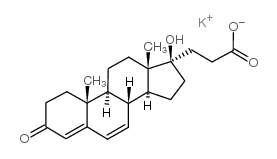Menopause not aldosterone-to-renin ratio predicts blood pressure response to a mineralocorticoid receptor antagonist in primary care hypertensive patients.
Oliviero Olivieri, Francesca Pizzolo, Alberto Ciacciarelli, Roberto Corrocher, Denise Signorelli, Salvatore Falcone, Gian S Blengio
文献索引:Am. J. Hypertens. 21(9) , 976-82, (2008)
全文:HTML全文
摘要
It has been suggested that hypertensive patients with raised aldosterone-to-renin ratio (ARR) are specifically sensitive to mineralocorticoid receptor antagonists (MRAs). We have previously shown that patients with an elevated ARR are relatively frequent in the setting of primary care. We therefore designed an interventional study to ascertain whether primary care hypertensive patients with an elevated ARR presented a superior response to MRA treatment than subjects with normal ratio.According to the previously observed distribution in general population, 1/3 and 2/3 of hypertensive patients with high or normal ARR, respectively, were treated with kanrenoate 50-100 mg/day for 2 months. To avoid uncontrolled blood pressure (BP), 49% of patients continued also "ARR-neutral" drugs such as verapamil and/or alpha-adrenergic blockers. Patients groups were matched for most features but an elevated ARR was more frequent in female than in male gender; moreover, 90% of women with raised ARR were in menopause.A clear reduction of BP values was recorded after both the first and the second month of treatment with kanrenoate, with the maximal effect obtained when the dosage titration at 100 mg/day was accomplished. However, patients previously identified by a raised ARR did not have a larger response to MRA treatment than patients with normal ratio. In contrast, MRA was twofold more effective in reducing SBP in women than in men (after 2 months of treatment -16.4 mm Hg vs.-8.2 mm Hg).These results suggest that postmenopausal hypertension is largely dependent on mineralocorticoid receptor activation and selectively sensitive to MRAs.
相关化合物
| 结构式 | 名称/CAS号 | 分子式 | 全部文献 |
|---|---|---|---|
 |
坎利酸钾
CAS:2181-04-6 |
C22H29KO4 |
|
Effect of the steroid K-canrenoate on hsp70 expression and t...
2012-01-01 [J. Insect Sci. 12 , 92, (2012)] |
|
Mineralocorticoids participate in the reduced vascular react...
2012-03-01 [Am. J. Physiol. Heart Circ. Physiol. 302(5) , H1195-201, (2012)] |
|
Akt-mediated cardioprotective effects of aldosterone in type...
2014-06-01 [FASEB J. 28(6) , 2430-40, (2014)] |
|
Differential effects of mineralocorticoid blockade on the hy...
2011-03-01 [Am. J. Physiol. Endocrinol. Metab. 300(3) , E592-9, (2011)] |
|
Population pharmacokinetic model of canrenone after intraven...
2012-11-01 [Br. J. Clin. Pharmacol. 74(5) , 864-72, (2012)] |